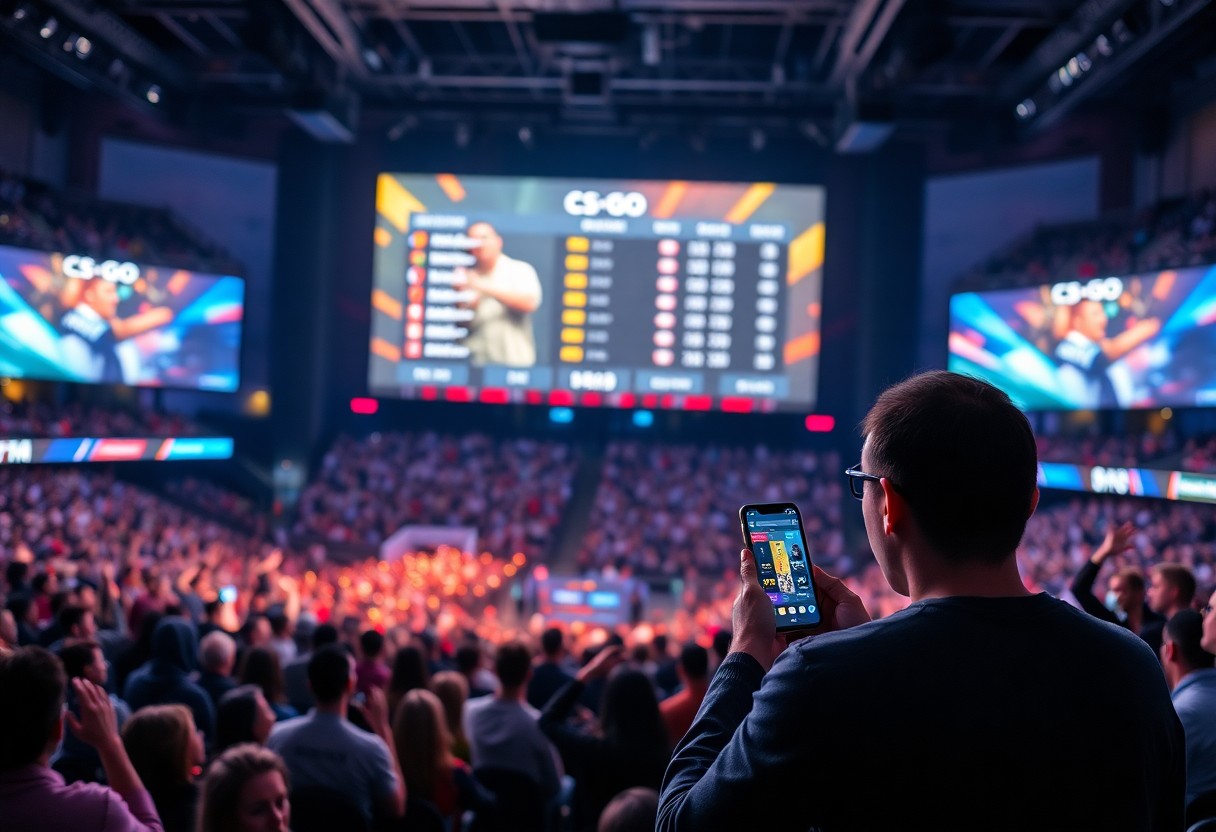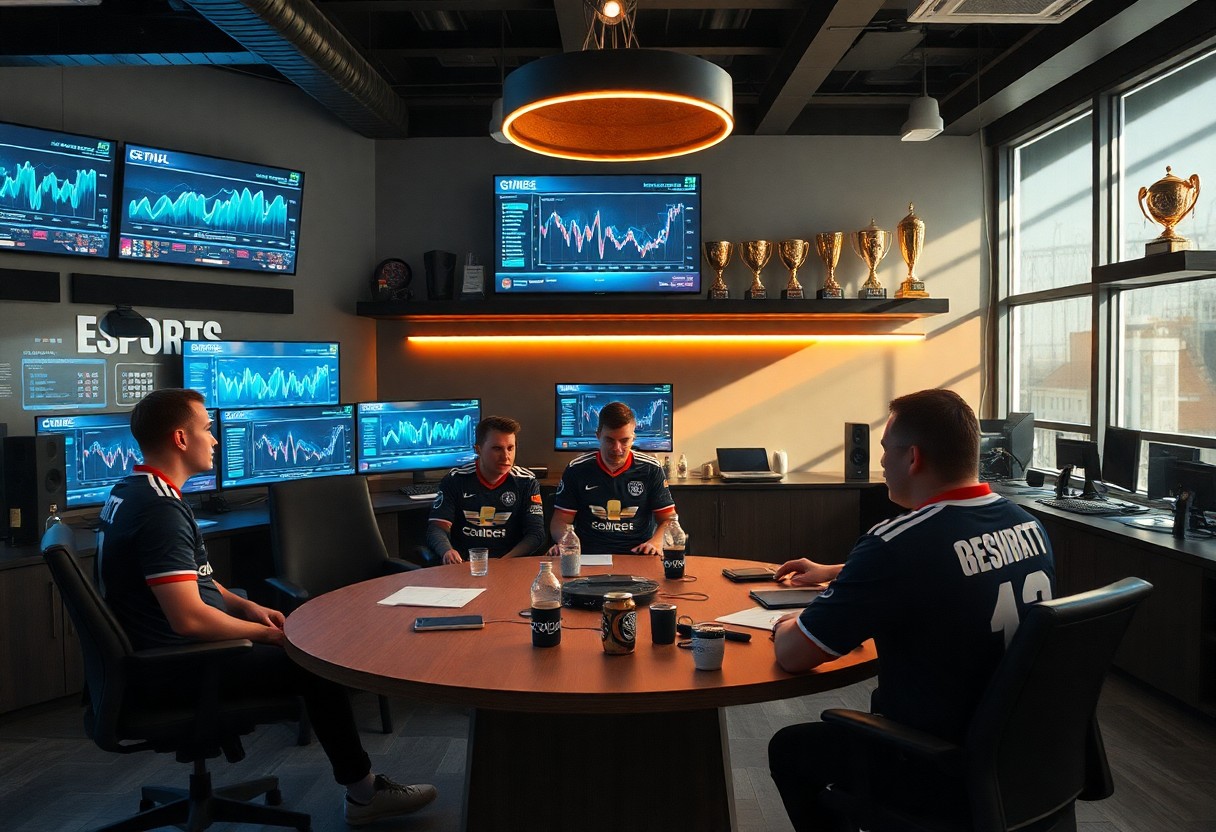Management in esports organizations involves a complex interplay of strategies to ensure optimal performance, well-being, and career development for players. These organizations employ various methods, from mental health support and training regimens to contract negotiations and brand collaborations. With the rapid growth of the esports industry, understanding how these organizations foster talent and maintain team cohesion is imperative for both aspiring players and industry enthusiasts alike. In this blog post, we will explore the multifaceted approaches that esports organizations utilize to effectively manage their players.
Player Recruitment Strategies
While the rise of esports continues to reshape the competitive gaming landscape, organizations increasingly refine their player recruitment strategies to secure top talent. Establishing a strong roster is pivotal for the success of any esports team; hence, organizations employ a systematic approach to identify potential recruits who align with their brand and competitive goals. Successful recruitment not only focuses on individual skill level but also emphasizes teamwork, adaptability, and an understanding of the game’s meta. By leveraging data analytics and scouting reports, organizations can make informed decisions that go beyond just in-game performance metrics.
Scouting Talents
Player recruitment begins with effective scouting for talent across various platforms. Organizations often designate scouts to monitor amateur leagues, online tournaments, and streaming platforms to identify promising players. These scouts observe not only mechanical skills but also the player’s communication, strategic thinking, and synergy with teammates. Social media presence and community engagement can also serve as indicators of a player’s potential marketability and ability to draw fan support, which organizations highly value in their recruitment process.
Trials and Assessments
Trials serve as a formal testing ground for players who have caught the interest of an organization during the scouting phase. During these trials, potential recruits participate in practice matches, scrimmages, and individual skill assessments that allow coaches and management to evaluate various aspects of a player’s performance. Factors such as adaptability to different team roles, decision-making under pressure, and compatibility with existing teammates are closely monitored. These assessments help organizations discern not just talent but also how well a player could fit into the team’s culture and dynamics.
In addition, trials often involve structured feedback sessions where coaches discuss areas of improvement with players. This exchange fosters a sense of growth, allowing players to understand their strengths and weaknesses in a competitive environment. Organizations might also conduct psychological evaluations to gauge a player’s mental resilience and readiness for the pressures of the professional scene. By combining gameplay assessment with individual development discussions, teams ensure they not only select skilled players but those who can thrive in high-stress situations alongside their teammates.
Player Contracts and Agreements
Any esports organization recognizes the importance of player contracts and agreements in establishing clear expectations and responsibilities within the competitive landscape. These documents outline the terms of engagement, delineating the rights and obligations of both the player and the organization. Contracts typically cover various elements, including duration, financial remuneration, code of conduct, exit clauses, and additional benefits such as sponsorship opportunities or housing arrangements. Consequently, a well-drafted contract not only safeguards the organization’s interests but also provides players with a framework for their professional growth and security.
Contract Structure
Beside the foundational elements mentioned, the structure of a player contract often varies depending on the player’s experience, reputation, and negotiation power. For entry-level players, organizations may offer fixed-term contracts with modest salaries and performance-based incentives. In contrast, established players or those with considerable marketability might negotiate for longer-term agreements with more complex remuneration structures, including a mix of base salary and bonuses tied to individual and team performance metrics. Ultimately, the contract must be tailored to ensure mutual benefit and alignment of goals between the player and the esports organization.
Legal Considerations
After establishing a solid contract structure, legal considerations play a fundamental role in shaping the terms of player agreements. Organizations must comply with varying labor laws and regulations that govern employment, intellectual property rights, and confidentiality agreements in their jurisdictions. Furthermore, esports organizations must also address the potential for disputes by including clauses that outline dispute resolution mechanisms, such as arbitration or mediation processes, in cases where parties cannot reach common ground.
Indeed, navigating the legal landscape of esports is increasingly complex, as the industry matures and players wield more influence. Organizations must ensure they are not only transparent in their dealings but also proactive in keeping contracts up to date with evolving laws and standards. Aspects such as non-compete clauses, social media conduct, and sponsorship rights are increasingly scrutinized, and organizations must balance protecting their interests against fostering an environment conducive to player development and satisfaction. By prioritizing clear legal frameworks in player contracts, esports organizations can minimize risks and promote a healthy competitive ecosystem for all involved.
Player Development and Training
There’s a multifaceted approach to player development and training within esports organizations, focusing not only on physical skills but also mental resilience and teamwork. The growing complexity of competitive gaming necessitates an investment in a structured environment that cultivates talent. Through individualized training plans and holistic development strategies, organizations aim to empower their players to reach peak performance levels consistently while also preparing them for the pressures of professional competition.
Coaching Staff Roles
Coaching staff play a vital role in shaping the future of players within esports organizations. Coaching encompasses a variety of responsibilities, including analyzing gameplay, devising strategies, and providing feedback to foster improvement. Coaches not only focus on technical skills but also instill discipline and motivation, mentoring players to develop good habits and a strong work ethic. Additionally, the coaching staff must manage diverse personalities and work styles to ensure a cohesive team dynamic that can thrive in high-stakes environments.
Training Regimens
Regimens tailored to the specific needs of players are a fundamental component of their development in competitive gaming. These training programs often include a blend of individual practice, strategic team drills, and mental conditioning exercises. By systematically addressing various aspects of gameplay, including reflexes, decision-making, and communication, players build a comprehensive skill set that enhances their overall performance. Regular evaluations and adjustments to these training regimens ensure that players remain both physically and mentally sharp, adapting to the evolving landscape of their respective games.
It is vital for training regimens to be flexible enough to accommodate the unique strengths and weaknesses of each player while also aligning with team objectives. Incorporating analytics and performance metrics allows coaching staff to monitor progress and optimize training sessions effectively. Moreover, incorporating rest and recovery practices is critical, as esports players face intense mental fatigue, and maintaining peak cognitive function is vital for success in competitions.
Mental Health and Wellbeing
Once again, the conversation around mental health and wellbeing in esports has taken center stage. With the pressures of competition, the intensity of practice schedules, and the high expectations from fans and organizations, players often face significant stress. Therefore, it is imperative for esports organizations to prioritize mental health initiatives, creating an environment that fosters both physical and mental wellbeing. By instituting regular mental health checks and providing resources for support, organizations can better equip their players to handle the unique challenges of the esports landscape.
Psychological Support
Behind the scenes, psychological support plays an integral role in managing the mental health of esports athletes. Many organizations are beginning to recognize the importance of having sports psychologists or mental health professionals on staff to work closely with players. These experts not only help players develop coping strategies for the pressures they face but also facilitate open discussions about mental wellness. Establishing a supportive culture where players feel comfortable seeking help can be transformative, allowing them to perform at their best while maintaining their emotional health.
Work-Life Balance
WorkLife balance is another vital aspect that esports organizations must consider to promote player wellbeing. The fast-paced nature of the industry often blurs the lines between work and personal life, leading many players to experience burnout. Organizations can help by setting reasonable practice schedules, encouraging time away from gaming, and fostering healthy hobbies outside the esports sphere. By valuing their players as whole individuals rather than just competitors, organizations contribute positively to their overall mental and emotional health.
Hence, it is important for organizations to implement guidelines that support work-life balance for players. This could include mandatory breaks during intensive training periods, opportunities for players to engage in non-gaming activities, and promoting healthy lifestyle choices. By prioritizing this balance, organizations not only enhance the long-term productivity of their players but also help them cultivate resilience against the pressures inherent in competitive environments. Ultimately, a well-rounded lifestyle contributes significantly to a player’s performance and their happiness within the league.
Team Dynamics and Communication
Many esports organizations recognize that the foundation of a successful team lies in its dynamics and communication style. The ability of players to interact effectively, understand one another, and work collaboratively can significantly impact performance during competitions. A cohesive team atmosphere not only enhances gameplay but also helps maintain mental wellness, providing players with a sense of belonging within what can often be a high-pressure environment. Organizations implement various strategies to foster this positive dynamic, ensuring that each player feels supported both on and off the virtual battlefield.
Building Team Cohesion
With the digital nature of esports, building team cohesion can often be challenging, yet it remains an imperative aspect of fostering a successful team. Esports organizations often organize team-building activities that go beyond practice sessions, such as retreats or friendly matches in different gaming titles. These outings promote social interaction and help players develop relationships that enhance trust and collaboration. Additionally, coaches play a pivotal role in promoting cohesion by facilitating open discussions and encouraging player feedback during team meetings.
Communication Tools
To ensure smooth communication, esports organizations leverage a range of digital tools designed to keep players connected both during practice and competitions. Platforms like Discord, Slack, and Microsoft Teams allow teams to communicate in real time, share strategies, and coordinate schedules. Such tools not only streamline information exchange but also provide a space for informal interaction, which can be vital for mental engagement and team morale. Furthermore, the availability of video conferencing allows teams to have face-to-face discussions, ensuring that all players feel valued and can contribute equally to team strategies.
Understanding the significance of using communication tools effectively can significantly shape the dynamics within an esports team. Players familiar with these platforms can navigate through varying discussions, whether they’re critiquing gameplay or simply engaging in casual conversation. The right tools empower organizations to maintain a culture of openness, where players feel encouraged to voice their opinions, share ideas, and collaborate on strategies, which ultimately enhances performance and strengthens the team’s bond.
Performance Metrics and Evaluation
Unlike traditional sports, where performance can often be observed through physical prowess and game results, esports organizations depend heavily on precise data analytics to track and evaluate player performance. This reliance on data helps organizations identify strengths and weaknesses in player gameplay, allowing for more tailored training regimens and enhanced team strategies. The combination of quantitative data metrics, such as win rates and kill-to-death ratios, alongside qualitative insights from in-game analysis, provides a well-rounded view of a player’s contributions to the team environment. By continuously monitoring these metrics, organizations can facilitate in-depth evaluations that guide player development and optimize overall team performance.
Data Analysis
Any effective performance evaluation within esports relies on robust data analysis to quantify player performance under various conditions. Organizations utilize advanced analytics tools that track nearly every action a player makes during a match, from positioning to decision-making moments. By mining this data, teams gain valuable insights into individual player behavior, allowing coaches to address specific areas for improvement or to validate successful strategies. This data-driven approach fosters a culture of accountability and enables organizations to adjust their game plans swiftly based on empirical evidence rather than anecdotal observations.
Continuous Improvement
To maintain a competitive edge, esports organizations prioritize continuous improvement for their players. Regular feedback sessions that discuss performance metrics encourage players to reflect on their gameplay, providing an opportunity to identify areas needing enhancement. The organization’s commitment to development is further exemplified through targeted skill workshops, coaching sessions, and reviewing gameplay footage. Understanding both the data and the emotional elements of performance allows players to adapt and evolve, which is crucial for thriving in the fast-paced esports environment.
Metrics play a significant role in fostering an atmosphere of continuous improvement within esports teams. By analyzing performance data consistently, organizations can generate actionable insights and adjust training methodologies accordingly. This iterative process not only ensures that players are meeting their potential but also keeps them motivated and engaged. Organizations that invest in these systematic evaluations are often better positioned for success in an ever-evolving competitive landscape.
Final Words
Upon reflecting on the management strategies employed by esports organizations, it becomes clear that effective player management is important for fostering a productive and competitive environment. Organizations focus on a variety of aspects including mental health support, performance analytics, and career development pathways. By prioritizing these areas, they not only enhance individual player performance but also contribute to the overall success of the team. Regular communication and feedback loops between management and players help in building trust and ensuring that the players’ needs are addressed, leading to a harmonious working atmosphere.
Moreover, esports organizations leverage data analytics to optimize training regimens and in-game strategies, allowing them to adapt swiftly to the ever-changing landscape of competitive gaming. By investing in professional coaching staff and providing players with resources for skill enhancement, organizations cultivate talent that can thrive in high-pressure situations. This comprehensive approach to player management ultimately sets the stage for long-term success, making it imperative for organizations to continuously evolve their strategies in line with industry trends and player expectations.






